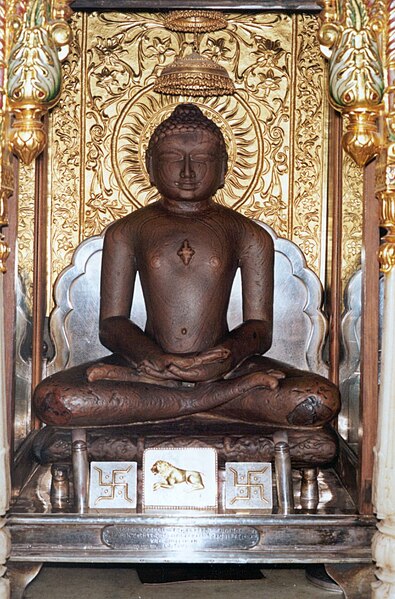Bhakti is a term common in Indian religions which means attachment, fondness for, devotion to, trust, homage, worship, piety, faith, or love. In Indian religions, it may refer to loving devotion for a personal God, a formless ultimate reality or for an enlightened being. Bhakti is often a deeply emotional devotion based on a relationship between a devotee and the object of devotion.
Nammalvar, considered the most prominent of the twelve Alvars (Tamil poet saints c. 5th to 9th century CE) whose hymns are compiled in the Nālāyira Divya Prabandham
Bengal illustration of the 15th century Krishna bhakta Chaitanya Mahaprabhu performing kirtan, devotional chanting and dancing, in the streets of Nabadwip, Bengal.
Meera (Mirabai) (circa 1498-1546) was one of the most significant poet-saints in the Vaishnava bhakti movement.
The Bodhi Tree under which Gautama Buddha attained Enlightenment has been a major site of Buddhist bhakti since the earliest period of Buddhism.
Indian religions, sometimes also termed Dharmic religions or Indic religions, are the religions that originated in the Indian subcontinent. These religions, which include Buddhism, Hinduism, Jainism, and Sikhism, are also classified as Eastern religions. Although Indian religions are connected through the history of India, they constitute a wide range of religious communities, and are not confined to the Indian subcontinent.
"Priest King" of Indus Valley civilisation
The so-called Pashupati seal, showing a seated and possibly ithyphallic figure, surrounded by animals.
A statue of Gautama Buddha from Sarnath, Uttar Pradesh, India, 4th century CE.
The idol of Mahavira, the 24th and last Tirthankara of Jainism.








